Photo: Anthony Kwan/Getty Images
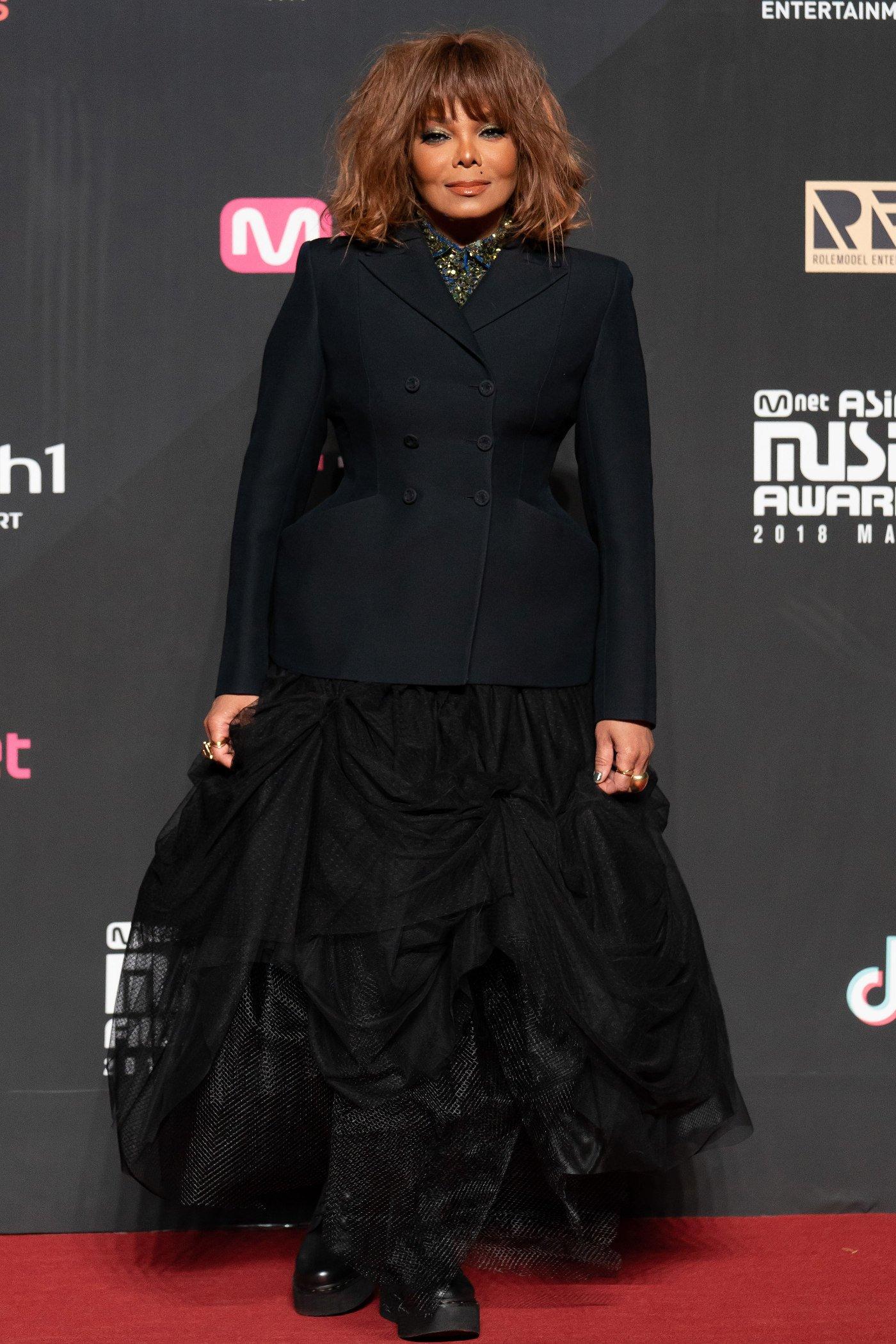
news
Glastonbury Festival 2019 Announces Headliners Janet Jackson, The Killers & More
Other performers include the Cure, Diplo, Sheryl Crow, Lauryn Hill, Janelle Monáe, Tame Impala, and Vampire Weekend
England's Glastonbury Festival of Contemporary Performing Arts revealed their initial lineup for 2019's June 26–30 event, held at Worthy Farm outside Pilton, Somerset. In addition to five-time GRAMMY winner Janet Jackson and previous nominees the Killers, 2019 Glastonbury is filled with a curated combination of the famous and emerging. Other GRAMMY winners on the lineup include the Chemical Brothers, Sheryl Crow, Diplo, Lauryn Hill, Mavis Staples, and Vampire Weekend.
<iframe width="620" height="349" src="https://www.youtube.com/embed/b2bXzuB7sZw" frameborder="0" allow="accelerometer; autoplay; encrypted-media; gyroscope; picture-in-picture" allowfullscreen></iframe>
In addition to the Killers, previously nominated artists performing this summer include Neneh Cherry, the Cure, Miley Cyrus, Fatoumata Diawara, Liam Gallagher, Jon Hopkins, Hot Chip, Hozier, Janelle Monáe, Jorja Smith, Tame Impala, and Wu-Tang Clan.
One of the joys of a curated festival like Glastonbury is experiencing new acts, from the established to those just on the radar. Two accomplished artists who stand out are the band Interpol and British rapper Stefflon Don. Others include Anne-Marie, Billie Eilish, Michael Kiwanuka, Lizzo, Pale Waves, Cat Power, Latin GRAMMY winner Rosalía, Sharon Van Etten, Kurt Vile & The Violators, and Kamasi Washington.
Although Glastonbury 2019 has already sold out, the festival encourages those wanting to attend to register at their website for an April ticket resale.
Janet Jackson Announces Metamorphosis Residency At Las Vegas' Park MGM
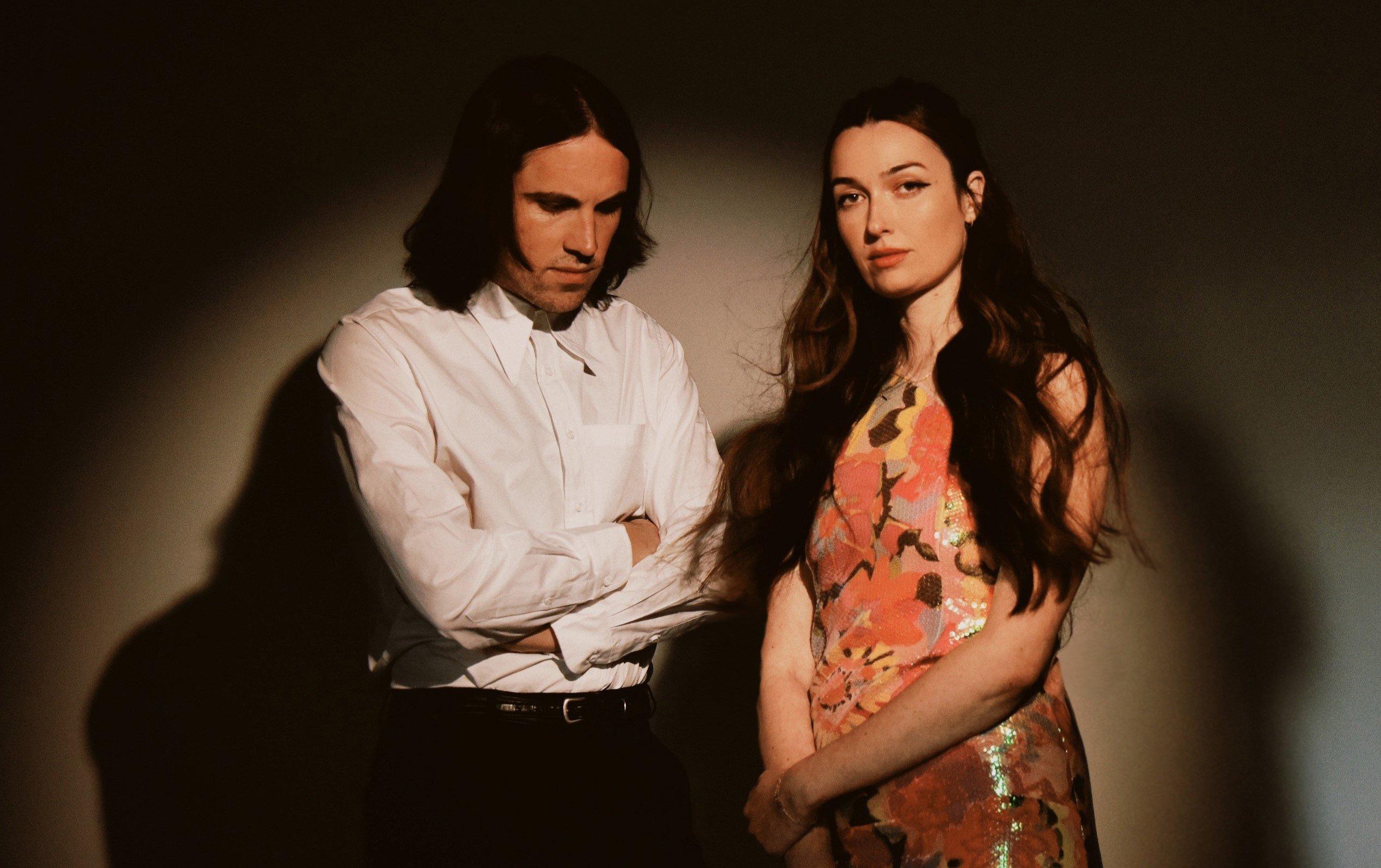
Photo: Shervin Lainez
interview
Cults' Evolution: Madeline Follin & Brian Oblivion Discuss Their Upcoming Album 'To The Ghosts'
Out July 26, Cults' new album reflects their 15-year journey as artists. Ahead of their Lollapalooza performance and U.S. tour, the duo discuss how they've pushed their sound forward.
Over the past 15 years, Cults have captivated audiences with their atmospheric, layered compositions that pack a pop-friendly punch. Now, on the brink of releasing their fifth album, To The Ghosts, on July 26, Madeline Follin and Brian Oblivion reflect on their journey and new creative freedom.
While their previous albums required the duo to stick to deadlines precariously organized between tours, the pandemic provided new circumstances. Freed of distractions and obligations, Follin and Oblivion traveled to Los Angeles in 2022 to join up with their longtime producer Shane Stoneback (Vampire Weekend, Sleigh Bells) to craft an album that looks back on their past while pushing their sound ahead.
"We don't have the sales pitch for the album down yet, but there's no other band that sounds like us," says Oblivion. "We're digging into our thing, and if you're into anything we've done before, you'll love this one."
Adds Follin, "We're like no other."
The album title is addressed to the ghosts of both Oblivion and Follin's past selves. As Oblivion explains, their four prior albums were time capsules that reflected the period in which each album was written and recorded. This release is something different.
To The Ghosts is a personal landmark for Follin, particularly. In 2020, upon the release of Cults' fourth album Host, she admitted that she'd been too shy to bring her own songwriting and demos to the table for the band's first three albums. It was Stoneback's encouragement that altered the creative process for the duo, resulting in their most collaborative album to date, and significantly more reliance upon live instrumentals in the studio.
"We spent a month in an AirBnB then a week in the studio with Shane," explains Follin.
"It was a mad dash to replace all the midi instruments with real ones, so we were running around playing vibraphones, organs, and guitars and all these things we'd recorded in demos and laying it all back down in one week."
It may have been a mad rush at the end, but over the years the duo have refined their formula for making albums. They're no longer the giddy art students and lovers making DIY music with no plans for world domination.
In 2010, Follin and Oblivion founded Cults and released their debut EP "Cults 7", followed by their debut self-titled album in 2011, which was similarly lauded. By the time their sophomore album "Static" arrived in 2013, the pair had freshly broken up and the themes of being creatively and emotionally stagnated resonated in dramatic, spacious orchestral compositions. They followed up with "Offering" in 2017, which was the first of the duo's albums to lean into optimism and a sense of embracing a more pop-friendly path.
That optimistic pop thread is picked up once more in "Crybaby", the first of 10 tracks that kicks off the new album. It launches with a lush, reverb-rich guitar hook and shuddering church bells, then shifts into a calypso beat and Follin's dreamy ode to escaping the modern malaise ("dry your eyes / turn off the screen"). Like the other catchy, bittersweet synth-pop numbers on To The Ghosts, "Crybaby" wraps up in close to three minutes.
The lengthy outliers are "You're In Love With Yourself" and the closing track "Hung The Moon," which runs over five minutes. Ending an album with an epic power ballad is their signature style and "Hung The Moon" bathes in drama, love, loss and redemption. "In a storytelling way, that's the only ending that makes sense to us, a melancholy resolution," Oblivion says.
To The Ghosts captures everything fans adore about Cults and they'll have ample opportunity to catch them performing live this year. The duo are set to return to Lollapalooza opening for Vampire Weekend on Aug. 4, followed by their own headlining U.S. tour the same month.
Ahead of their intensive touring schedule, the duo joined GRAMMY.com on a group video chat from their respective homes in New York’s East Village one evening, to discuss their upcoming release.
This interview has been edited for brevity and clarity.
You began working on this album during the pandemic. Tell me where you wrote and recorded material, and whether you did that together or separately?
Madeline Follin: We were writing and recording in Brian's spare room. Can you see him?
Brian Oblivion: This tiny room! [directs the camera around a room not much bigger than 7 x 10 feet].
Follin: I sat on that couch right there, and we spent a lot of time in that little room [laughs]. For the most part we were together for the entire thing.
**Madeline, you revealed that before making your fourth album Host, you were too shy to show your own music to Brian and producer Shane Stoneback. What broke that barrier down for you to fully participate in the creative process?**
It was really hard to get it out of me. I had really strong imposter syndrome. Even though Brian was just starting out, he had taken a few recording classes in college, so he knew a lot more of the recording lingo and ways of communicating technically. I didn't know, so I felt so nervous to even communicate what I wanted. Shane helped with that a lot in terms of translating what I wanted into the language of studio speak. Shane is unlike any other producer we've worked with. He heard me out.
Tell me about working with Shane Stoneback in terms of what you came into the conversation with, and what he contributed to shaping this album.
Follin: We thought that we were not going to work with Shane again because he'd largely gotten out of the business. During [the] pandemic he switched careers and began working in the movie business. So, we started working with a few other people, we were feeling it out, and it just wasn't working. We reached out to [Shane], and he randomly happened to have 30 days off and said if we can finish it in 30 days, we can do it. We said, "we're coming out tomorrow."
What were the creative decisions you made in the earliest stages, and how much did you change your mind or allow outside ideas in as you were working on this album?
Oblivion: It took us a really long time. We definitely wrote over 100 songs. I put it all on an iTunes playlist and it was over 6 hours of music. This time we got a lot of confidence from some of our older songs being popular with young people. We thought, maybe the time has come around where we can do exactly what we do, and that's kinda 'new' again. Once we went through all the permutations and landed on "Crybaby," which was the first song on the record, we just thought "this just feels like us, so let's lean into what makes us unique." The messing around period was just trying out new tricks and trying to expand our possibilities.
John Congleton has a real knack for guitar sounds and finding a rawness to live instruments. How did he come to mix this album?
Oblivion: I've been a fan of John's going back to Xiu Xiu and my high school days. He's a master of distortion, him and Dave Fridmann, that's their thing. They can make things really fuzzy and interesting, but also fit it all in the speakers in a way that's like a weird magic trick. We have kind of a vintage sound, and he gets that but he's also smart at highlighting things that are new. He mixed our last record too and from the first conversation, in which he said he thinks like a musician and wants to do something strange, we knew we wanted him.
Follin: We'd mixed with other people before but when we got a mix back from John, he was bringing out parts of the song that we hadn't even recalled leaving in there. He makes our songs sound new to us again. We have a lot of trust and respect in him, and we were trying for so long to get our schedules lined up.
Oblivion: We work on our music for so long that by the time it's ready for the mix, we really want to hear something new. It's refreshing for us that John hears something new in us.
Tell me about "Crybaby," the first single. What were you going for in terms of the music, the mood and the message?
Follin: We'd been working on that song as part of the 100 songs that didn't make it. Brian started working on that song and I had never heard anything like that come out of his computer before, and I was shocked. It's funny because people say it's so "Cults sounding", but I thought it was unlike anything we'd done before. It's got a '60s vibe, an island vibe, to me and I thought we needed to zone in on it.
Oblivion: That was at the point where we decided "let's see if we can still make Cults songs that hark back to the earliest record." I love the lyrics, they're simple and there's no hidden meaning, which is great. A lot of the music that we love and that inspired the start of our band, is really obvious but also really weird in terms of lyrics. "Crybaby" is a fun, whacky diss track.
Let's talk about what inspires you musically.
Oblivion: What gets me excited is spending a lot of time sharpening my Spotify algorithm, so every Monday I get a collection of weirdo emotional love songs about heartbreak, these obscure, catchy B-sides, and whenever I find a song like that, I'm so inspired. Something that has kitsch, gravitas, and a bit of humour, that John waters, David Lynch combination lights me up.
Follin: Right now, I'm really into a lot of Fontaines D.C. I felt a 'Cults' vibe from them even though they probably have no idea who we are. It's been a while since I've put on a song, and then I want to put it on again right away.
"Left My Keys" is an anthem for growing up. Tell me about your experience growing up in this band.
Oblivion: What makes this record different is that historically, we'd do all the music together over a span of two years, then Maddy would squirrel away to take a month or two to write all the lyrics, and that made the records very reflective of that moment, that time. For this record, because we had a protracted work schedule with nothing else to do, we took the time to slow down and look back. "Left My Keys'' is about being a teenager, and "Crybaby" is about things that happened a long time ago. Growing up is being comfortable enough to address your own past and realizing everything turned out okay so far. It's the first album where we're looking backwards and processing stuff from the last 15 years and before.
This album feels brighter than 'Host.' What happened between 'Host' and 'To the Ghosts' that explains the transition?
Oblivion: There's a lot of stuff we got out of our system. Host and Offering were both dark records, to me. It's wild to see that young people have picked up on "Gilded Lily" and that was such a crazy, cathartic song for us, so now it is crazy and cathartic for them. Most of my favorite bands are dark, sad bands, but that's not the totality of who we are. Being able to explore both sides of who we are was refreshing for us.
Follin: Personally, we were both feeling a lot better in our lives. We worked through a lot of anxiety, and because of the pandemic there was less partying, clubs, and bars. We had time to get healthier.
Oblivion: In a lot of ways our band is defined by our limitations. We have made music for 15 years, just the two of us with the same producer. But every time we make something new and interesting and all the things we think of as roadblocks help to provide a framework for what we do.
You released 'Host B-Sides & Remixes' in 2022, two years after 'Host.' Are there outtakes, or planned remixes, that are planned for this album too?
Follin: Definitely. 100 percent, we will be having something, but I'm not saying.
Oblivion: It's been really fun with the last few albums to put out songs that showed what would have happened if we went in a different direction. Sharing that part of the process with listeners has been fun.
You have a huge schedule of touring. Tell me about the plans and how you mentally and physically endure all the travel and performances. Does it get easier the more you do it?
Follin: No. Every single night, even if we're in the middle of nowhere, whether there's 15 people or 1000, I almost have a heart attack before walking on stage each night. You're crammed in a box with 7 people every night, there's a lot of emotions…
Oblivion: …and something is always breaking at soundcheck, it's like arghhhh! It's really hard, but when we put out Host and we didn't get to tour for two years, we missed that connection. The feeling of sharing your music with people allows us to move past it and get into something new. It's a big part of our personal growth and experience. We love touring.
Follin: In normal daily life, we hang out together. We hang out on weekends. It's not a forced thing. It feels so good to meet fans every single night, too, and hearing stories of how you affected somebody's life.
Most of the tracks on this album fall at around the three minute mark, and many end quite abruptly without fading out or dwindling down. Was that a deliberate strategy, and then why did "Hung The Moon" require that extended time as the finale?
Oblivion: It's verse-chorus-verse-chorus-bridge-chorus and you're done in three minutes!
Follin: Brian is very concerned about time, and I don't think it matters. I like shorter, he likes longer. We're compromising.
Oblivion: "Hung The Moon" is the big epic ballad that ends the record. We have had one on every record, it always ends with a big power ballad. In a storytelling way, that's the only ending that makes sense to us, a melancholy resolution. I love that song because it starts off as a sweet love song then it gets tense and spooky towards the end, but the lyrics stay really loving. It's that transition between the rush of an initial relationship and then the long game, where it's sweet and delicate, but it's also real life, so you're afraid that you'll lose things and you're trying to hold on to that original thing. So, the album ends on a bittersweet note.
Lollapalooza News

Cults' Evolution: Madeline Follin & Brian Oblivion Discuss Their Upcoming Album 'To The Ghosts'

'Lolla: The Story of Lollapalooza' Recounts How An Alt Rock Fest Laid The Blueprint For Bonnaroo & More
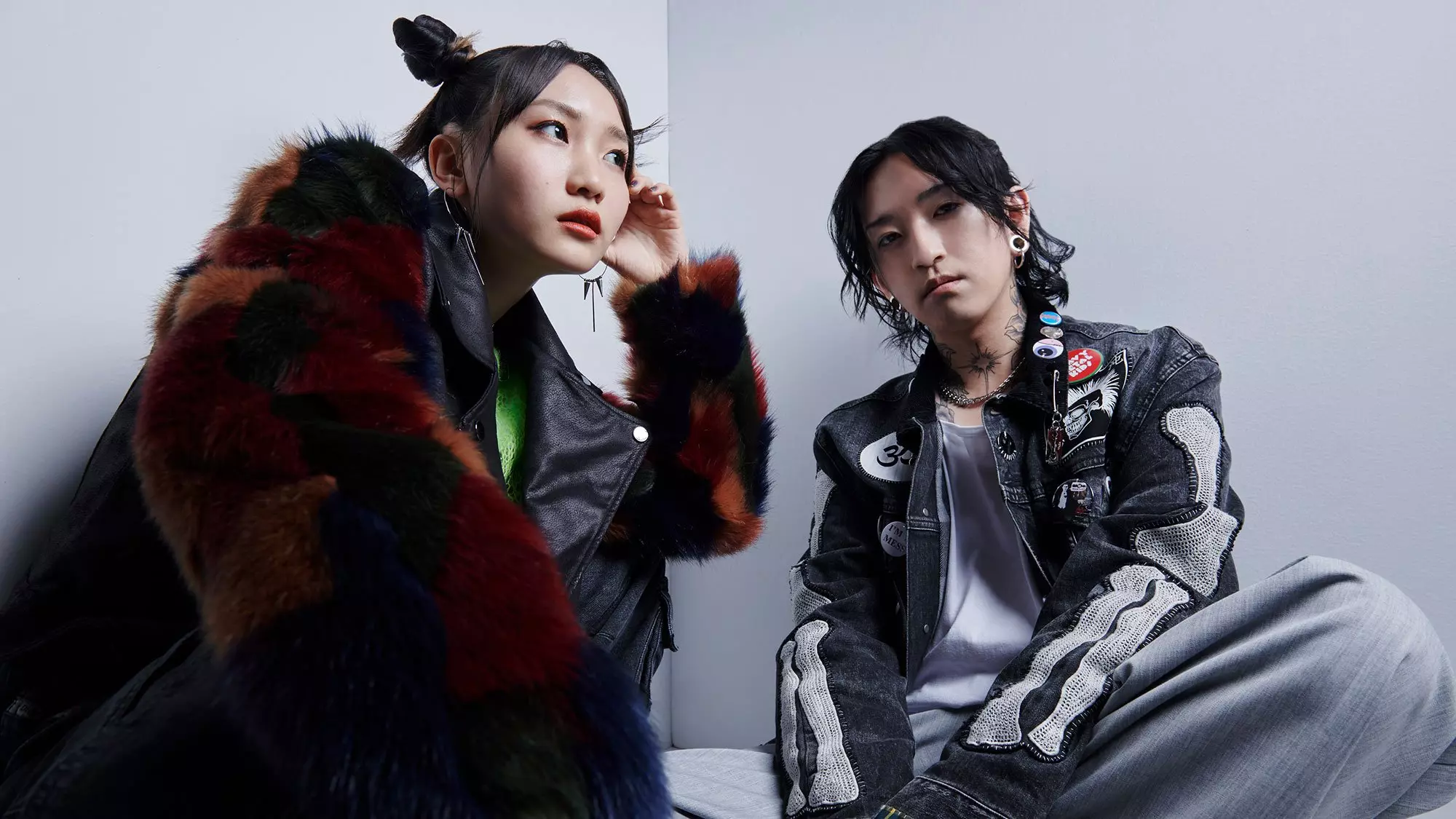
From Tokyo To Coachella: YOASOBI's Journey To Validate J-Pop And Vocaloid As Art Forms

Lollapalooza Announces Lolla2020 Virtual Fest Celebration In Place Of Cancelled In-Person Event
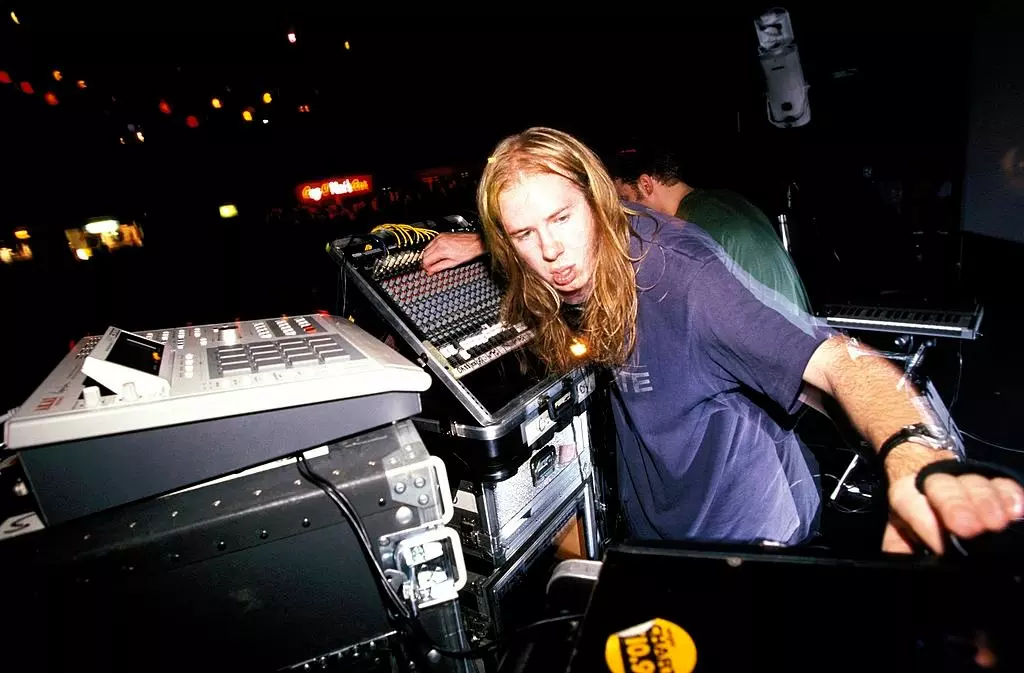
How 1995 Became The Year Dance Music Albums Came Of Age
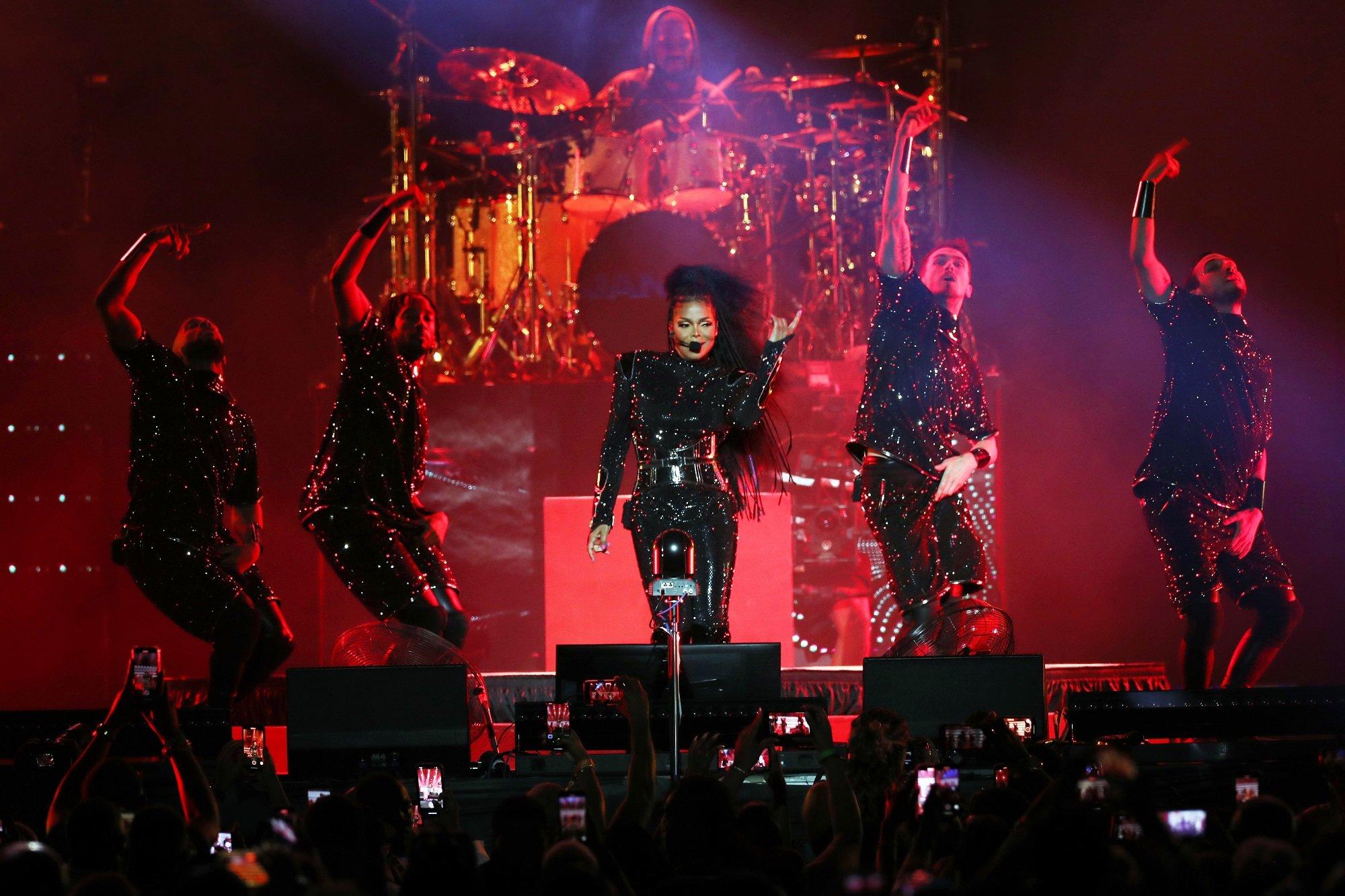
Photo Credit: Bennett Raglin/Getty Images for Essence
interview
Celebrating 30 Years Of Essence Fest: How New Orleans & Multi-Generational, Diasporic Talent Create The "Super Bowl Of Culture"
Ahead of the 30th Essence Festival Of Culture, held July 4-7 in New Orleans, GRAMMY.com spoke with executives and curators of the legendary celebration of Black excellence.
Every July, millions of Black people, specifically Black women, descend upon New Orleans for the Essence Festival of Culture (EFOC). Known for many years as the Essence Festival, the festival is a celebration of Black culture, community, and heritage. Since its inception in 1995 as a one-off event to commemorate the publication’s 25th anniversary, the festival has evolved into a diasporic jubilee, drawing in people of African descent from across the diaspora.
In addition to its global presence, the festival pours millions of dollars into the local New Orleans community, which has served as the festival's home for 30 years (with the exception of 2006, when the festival was held in Houston, because of Hurricane Katrina). In 2020, the festival was canceled because of the COVID-19 pandemic. Despite this, the annual festival continues to be one of the most sought-after and attended festivals in the United States.
This year’s Essence Festival of Culture will be held at the Superdome from July 4-7, replete with legendary and fast-rising talents. On July 5, Birdman & Friends will celebrate the 30th anniversary of Cash Money Records. The following day will feature a special performance by Charlie Wilson, while Usher will commemorate the 20th anniversary of Confessions.
Janet Jackson and Victoria Monét will headline the festival's final night, while Frankie Beverly and Maze close out the festival with the return of All-White Night. Other performers include The Roots featuring Mickey Guyton, Ari Lennox and T-Pain, Busta Rhymes, Raphael Saadiq, D-Nice featuring Shelia E, Big Boi, and many more.
Read more: Music Festivals 2024 Guide: Lineups & Dates For Lollapalooza, Coachella, Bonnaroo & Much More
EFOC has been compared to SXSW, Coachella, Austin City Limits, and other notable festivals, yet it stands out for its empowerment-centered approach. It is not simply a festival, it is a family reunion. The one festival in the United States that does not pander to or take advantage of Black audiences, but truly celebrates them and their achievements. Although music has always been an integral part of the festival’s ethos — Aretha Franklin and B.B. King performed at the first iteration — the festival excels in its multi-generational and interdisciplinary programming. On any given day, attendees can attend sessions on Black entrepreneurship, politics, mental health, and literature, as well as seminars focused on issues impacting the Black community.
There’s a reason why the festival is referred to as the party with a purpose. For decades, it has operated as a celebratory convening place for Black people, Black families, and Black communities. Now, more than ever, spaces like EFOC are needed, as the Black community experiences an onslaught of changes — from Historically Black Colleges and Universities in North Carolina and Tennessee being subject to intense government oversight, to Black women-owned venture capital firms being targeted by conservatives, and Black voting rights becoming at risk during an election year.
Ahead of the festival’s 30th celebration, Michael Barclay, Executive Vice President of Experiential for ESSENCE Ventures and Barkue Tubman Zawolo, Chief of Staff, Talent and Diasporic Engagement for Essence Ventures, spoke to the Recording Academy about the history, legacy, and future of the Essence Festival of Culture.
This interview has been edited for clarity.
Are you part of the generation that grew up with the Essence Festival of Culture? If so, how does it feel to be a part of it?
Barkue Tubman Zawolo: I'm originally from Liberia. And even being in Liberia, prior to my family moving to the U.S. in 1980, Essence was always a thing for my mom and my aunts. When we came here, fast forward to me, as an adult, [after] graduating college, I got into the music industry. I've managed artists that have gone through the Essence stages and pages in different ways.
Essence Fest has always been something that we were familiar with. I have to say, I had not really experienced Essence Fest until 2019 when Essence was actually a client. One of the things that I was doing [at that point] was integrating the Diaspora and African creatives within the festival in fashion and music.
To be in the role that I'm in right now and to be on a team with people who have been a part of Essence for a long time…. Essence seems to be ingrained in all of our fabric. [What] started as a music festival now is the Super Bowl of Culture that is the Essence Festival of Culture. To be on the team that helps bring this to life for our community is a daunting but rewarding task all in the same.
Essence is something that I don't think anybody in our community takes lightly. Even our partners understand the value of it. We certainly understand that we serve the Essence-inverse and, and we are in service to this community. It is a huge honor to be able to be a part of the team that brings this to life and, and, and constantly hear what it means to the community globally too.
One thing that I admired, especially about last year's festival, was GU Kickback — a music event hosted by Girls United, the publication’s Gen Z vertical. I saw a number of local artists from New Orleans, such as 504ICYGRL. ESSENCE just released a series of cover stories celebrating the 30 year relationship between the publication and New Orleans; how do you highlight the city and their history?
Michael Barclay: As somebody who's worked in experiential, creating gatherings and experiences for almost 25 years now, the venue is always important when you're trying to set the box where you are creating for your community, for your audience. New Orleans has been that backdrop for us for almost 30 years now.
New Orleans is the convergence of our mission, our brand, in a city that is perfectly matched for that energy. New Orleans is as much a part of Essence Festival of Culture as Essence Magazine is to Essence Festival.
It is very much a partnership that has created this cultural movement. To be more inclusive, and highlight more of those local relationships and talent is very intentional. It has been something that we have put a lot of energy and effort into over the last couple of years.
This will be my third festival this year. I think Barkue, you started maybe a year or two before me. We're a fairly new crew that is working to help grow and reshape and solidify those relationships. Even with how we handle the management of the festival.
Our VP of Essence Festival, Hakeem Holmes is a hometown boy from New Orleans. He's the pride and joy. They love to see him coming. He's always enlightening us on the things that we need to be focused on for the city and how we make the best partnership and make the best impact on the area.
It was intentional what you saw last year. It's intentional this year. We dedicated our entire festival edition of the magazine as a love letter to New Orleans. It's a symbiotic relationship that is one of the key reasons why this festival is the Super Bowl of Culture.
I would love to hear about the talent aspect of the festival. Last year, Megan Thee Stallion headlined. In previous years, Beyoncé and Prince have served as headliners. What is the formula between balancing local talent, national talent and diasporic talent at the festival?
Zawolo: As we grow the festival, the intentionality becomes even more and more important. And, what we do in understanding where we are as a brand.
We're 30 years into the festival, the brand is 55 years. What's traditionally known as the Essence Woman is now bringing her daughter. It's multi-generational. We also know that the world is as big as your cell phone, so people are now exposed to different types of content and music.
We see the influence of Afrobeats and Caribbean music. We are intentional about making sure that every night really speaks to multiple generations, but it's anchored in a generation. It's like, who's bringing, who to the concert on Friday? Is it the daughter bringing her mama?
It's anchored in that younger demo, but we're going to make sure that they're going to have a collective good time there. Saturday is usually our heaviest night. We have our living legends that show up there; that really cuts across generations. This is anybody can bring anybody, but let me tell you, you're going to be able to teach each other, connect with each other with the different groupings of talent that we have.
We try to make sure that there is something that speaks to us, but that that connects with the diaspora on as many nights as possible. Sometimes it's not because they're from a different country, but because we know the music also resonates.
If you think of Janet Jackson, you can go anywhere in the world. She can check off that box, although she's not from there. You can create those ties, but we also are intentional about having Ayra Starr and Machel Montano. Last year we had Tems and Wizkid. The goal is to continue to grow what that looks like, because we are a global brand and that is our diasporic and global intent in connecting the global Black community is really important.
We are intentionally multi-generational. We intentionally lead into where a multitude of generational communities can come together and have fun together. There is something for everybody. We have a unique opportunity with Essence as the brand grows to be able to not only speak to what they want to call the aunties, I call the punties. I also think that this is where we get to educate the next generation on where we're coming from. We also get to learn from them on where they are and where they want to go.
What a beautiful way to kind of tie all of these connections. Last year, the festival celebrated 50 years of hip-hop; this year you're celebrating the 30th anniversary of the festival. What is the intention behind this year’s music programming?
Zawolo: Paying homage to people who had done some historical things on our stages. We have Janet [Jackson] back. People are like, “Oh, we saw Janet two years ago,” but Janet is also one of the highest sellers in the festival's history.
If we're going to celebrate, let's celebrate, because we know Janet never disappoints. We also want to lean into some of the [older] talent, like Charlie Wilson, Uncle Charlie. He's graced that stage so many times, but yet it's still very relevant. Using this moment to reignite things that we've done in the past and bring them back to life that we know the audience missed.
Frankie Beverly, who is going to come, this is probably going to really be his last performance. The passing of the torch. This year was about having to be intentional about what other milestones are happening that are important to this culture. Cash Money is also celebrating 30 years. Who better, right?
Essence has been in New Orleans for 30 years. Cash Money and crew are from New Orleans. Juvenile just got the key to the city from the mayor. We want to honor and celebrate him, but we also want to recognize the influence that this group of very creative, entrepreneurial, rappers and artists have had on culture, because there was a time where we all were backing that ass up.
Making sure we highlighted milestones, connecting with people who have historically been a part of making history with us, introducing some new ones — that's what we have to do. We have to set up now for the next 30 years. We want to go to the soul of what appeals to our audience, and we're really all about good music.
I think the 30th year just continues to do what we do. As we look to grow and connect demos, Megan Thee Stallion is a very viable option because again, the daughter now is going to bring the mama. Intergenerational diasporic and connecting demos, I think that only happens at the Superdome. That's also happening in the convention center, which I believe is honestly the soul of the festival.
What are your hopes and aspirations for the next 30 years of the Essence Festival of Culture? Will Essence Fest always be in New Orleans? Are we going to have an Essence Fest in Lagos, Nigeria?
Barclay: Being on this side of [EFOC], seeing the true impact of the festival and how it impacts the communities, how it impacts the folks that come to New Orleans, and now, because we've expanded to our virtual audience, the 1.7 million that are viewing around the world, my hope for the festival is that we continue to show up where our community needs us.
We're going to be in New Orleans. We're going to be in our official world as we call it. If you can't make it to New Orleans, you can tune into Essence.com and you can see what's going on there. We are creating virtual experiences, AR experiences, VR experiences, all those things, so really keeping up with the way that people continue to connect with each other, whether they're physically in the same place or halfway across the world.
I think that type of innovation is what I want to continue to see us do and allow us to create that joy that we generate in New Orleans and wherever it's needed for our community.
PRIDE & Black Music Month: Celebrating LGBTQIA+ & Black Voices
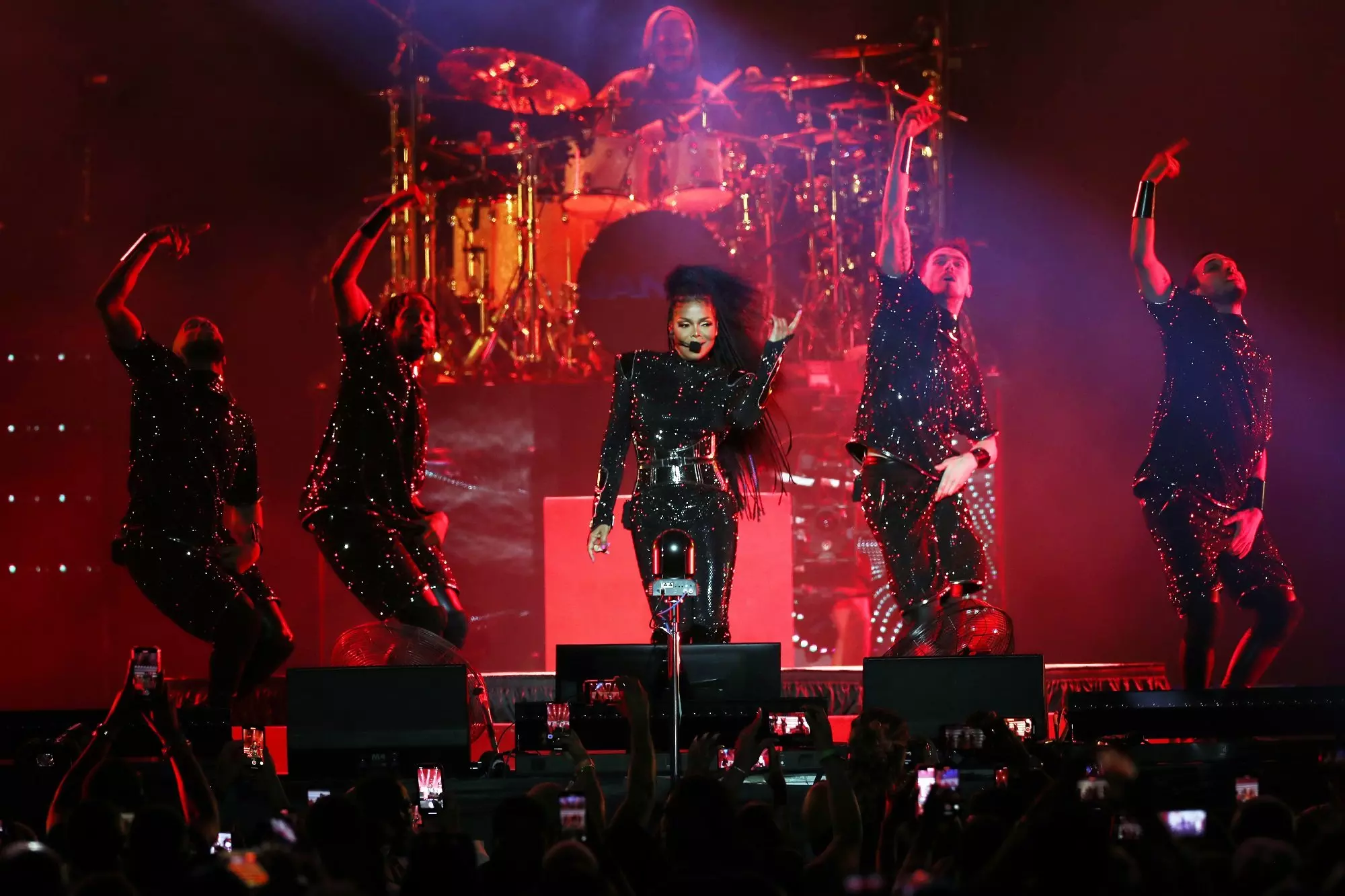
Celebrating 30 Years Of Essence Fest: How New Orleans & Multi-Generational, Diasporic Talent Create The "Super Bowl Of Culture"
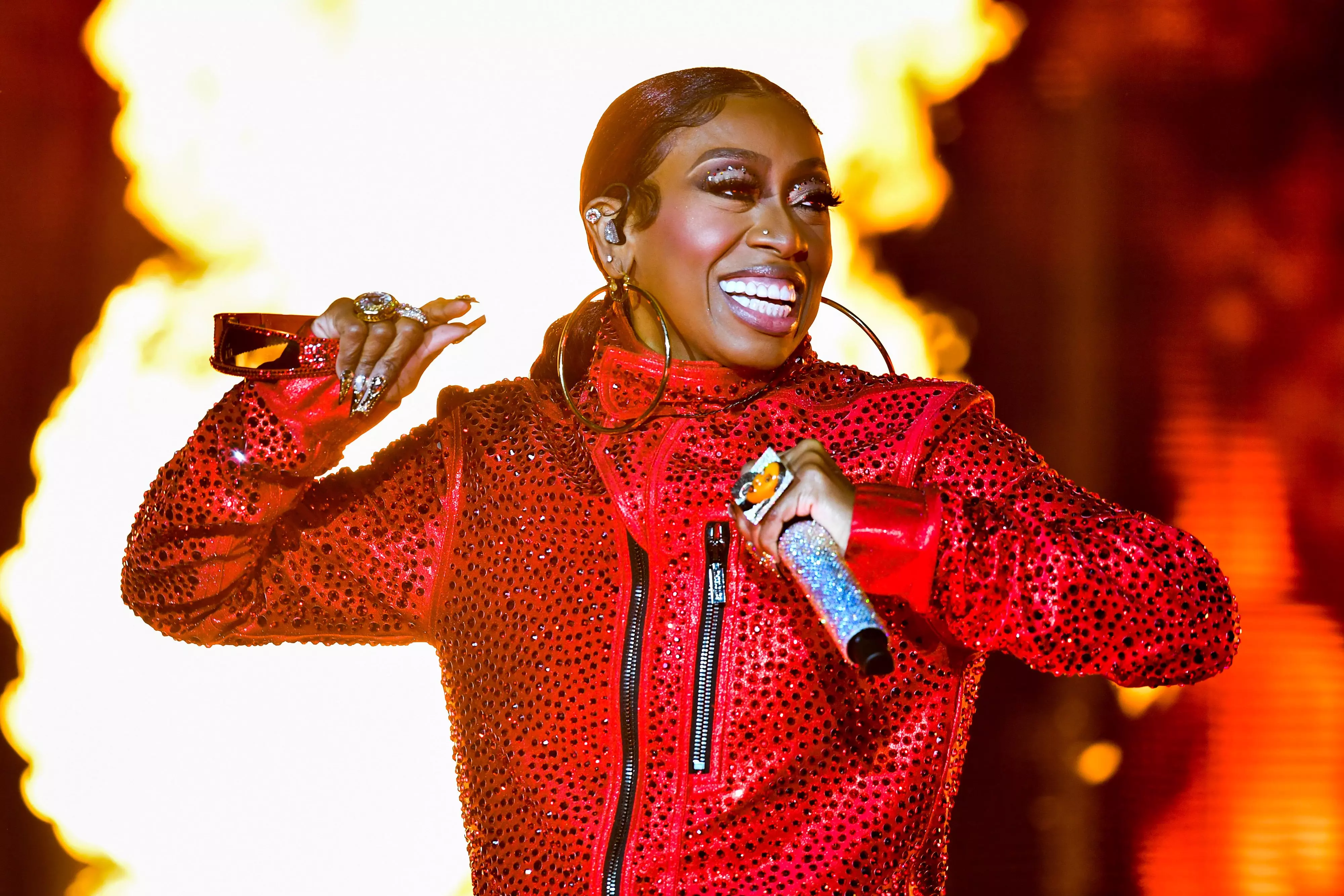
Celebrating Missy Elliott: How The Icon Changed The Sound, Look & Language Of Hip-Hop

Tekno Talks New Music, Touring America & His "Elden Ring" Obsession
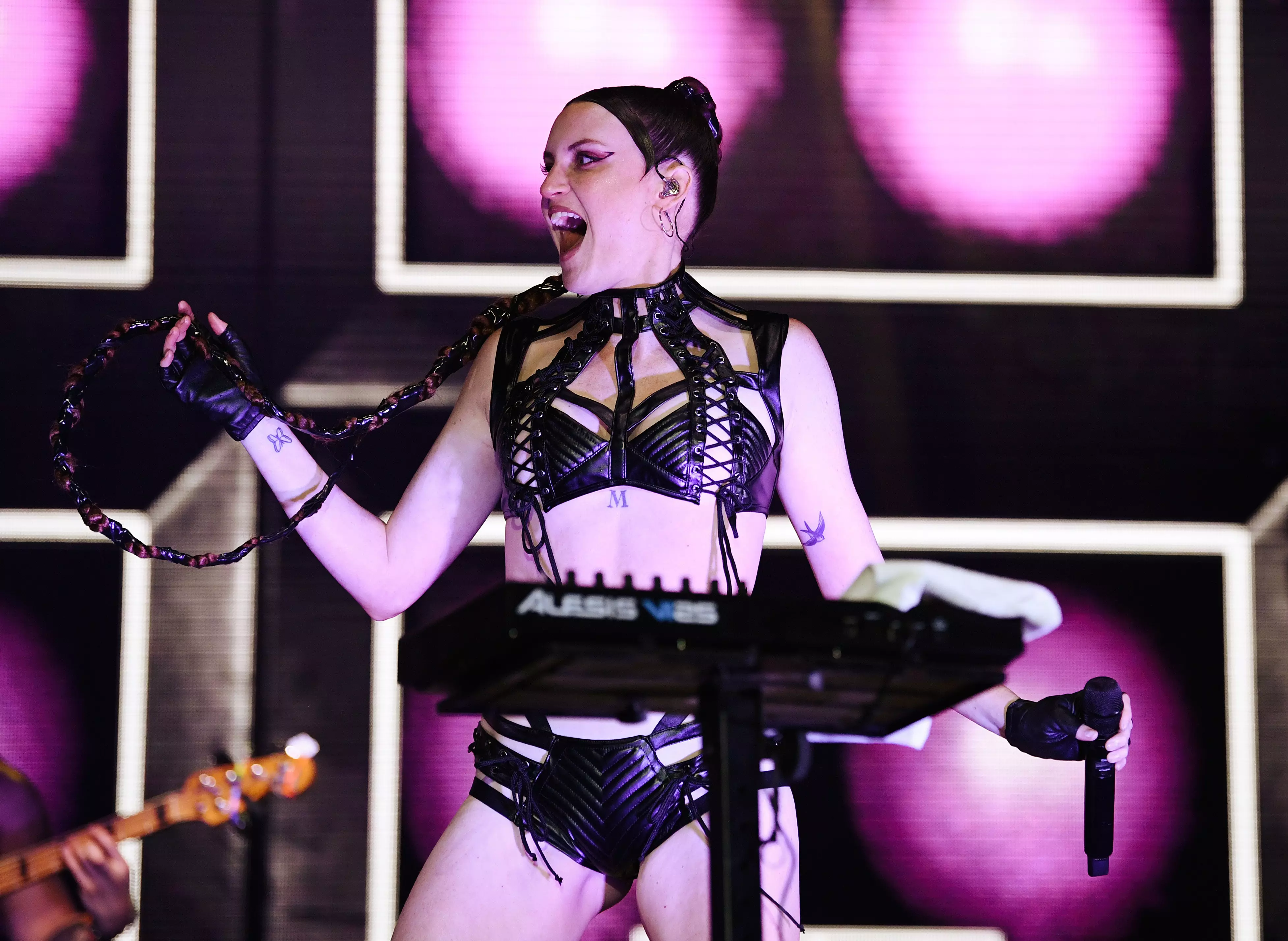
5 LGBTQIA+ Record Labels To Check Out: Get Better Records, So Fierce! And Others
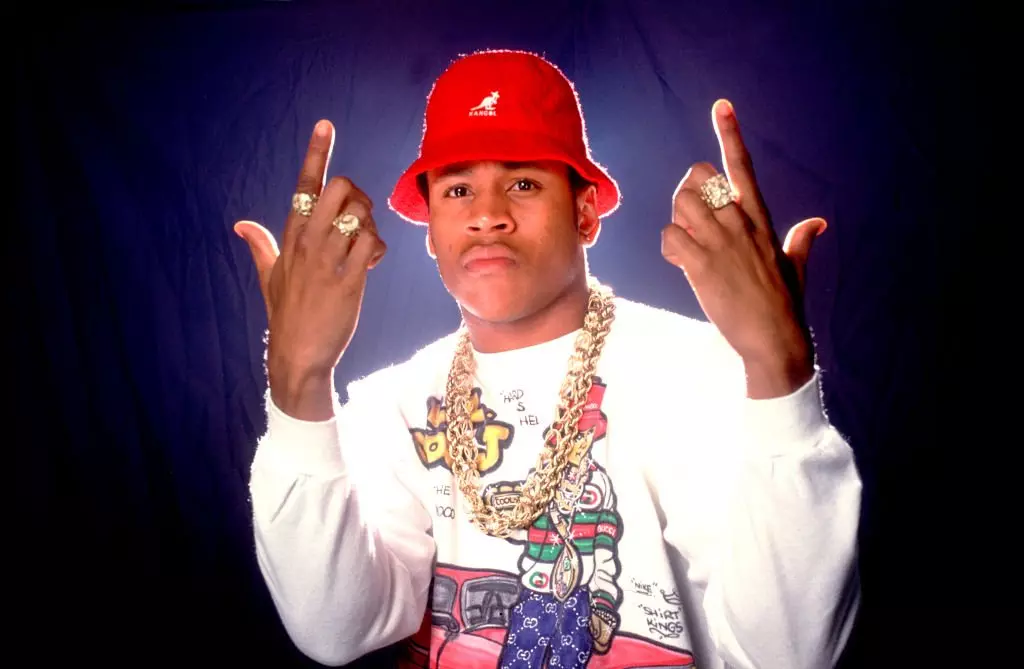
Celebrate 40 Years Of Def Jam With 15 Albums That Show Its Influence & Legacy

Photo: Ashley Osborn for Bonnaroo 2024
list
9 Epic Sets From Bonnaroo 2024: Ethel Cain, Melanie Martinez, Megan Thee Stallion & More
With an exciting mix of rising stars and big-name performers, Bonnaroo 2024 brought another year of showstopping performances to Manchester, Tennessee. Revisit some of the most intriguing sets from The Japanese House, Interpol and more.
The 2024 iteration of Tennessee's Bonnaroo Music & Arts Festival was an absolute scorcher — even without the 95-degree highs.
The weekend brought some of the hottest names in music for a stacked lineup of buzzy newcomers and hitmaking veterans. From the Red Hot Chili Peppers' spectacular return to touring with John Frusciante, to Dashboard Confessional's star-studded Emo Superjam, to Billy Strings joining Post Malone for "rockstar," to Chappel Roan singing to a wig, there was no shortage of unforgettable moments at The Farm.
While this year was the literally hottest that Bonnaroovians had seen in a few years, sweating through shirts (or lack thereof) proved completely worth it as some of the biggest iconoclasts came together and brought their all. It was electrifying, whimsical and at times emotional — and the bright, sunny skies served as the perfect backdrop for it all.
If anything, the blistering — and briefly thundery — weather was a testament to the enduring nature of music fans; folks from all over the globe will never miss a chance to watch their favorite artists. Relive the magic with nine of the most exciting sets from Bonnaroo 2024.
The Foxies Took Technical Mishaps In Stride
The Foxies | Yvonne Gougelet for Bonnaroo 2024
Nashville's premier glitterpunk exports the Foxies delivered a fun, crowd-pleasing set Thursday night on the Who stage, even despite a flurry of audio issues and technical hiccups. The Roo crowd was forgiving, though, and the band rewarded us with some of the best songs from their catalog — plus a cover of Sheryl Crow's "If It Makes You Happy."
"Summer Never Dies," "Timothee Chalamet," and "Little Monsters" all landed perfectly, but the group's personality shone brightest during their newest release, "Natural Disaster." It couldn't have been a more apt song for Bonnaroo's carefree setting — an ode to feeling free and accepting the wildest parts of yourself.
"A huge theme while we were writing ['Natural Disaster'], for me, was when I was 20 living in Brooklyn, how I was, all the cringey stuff that I did as a young adult," The Foxies frontwoman Julia Bullock told GRAMMY.com backstage. "I wish I wouldn't have shied away from it, or been embarrassed by it — I wish I'd leaned into the cringiness. This is an anthem for that: if I could do it all over again I would just embrace the fact that we are all just weird." Indeed we are, Julia.
The Japanese House Brought Love And Light
The Japanese House | Yvonne Gougelet for Bonnaroo 2024
Since its 2015 inception, The Japanese House has always been in the zeitgeist. Where Amber Bain's heavily layered, mournful music was inescapable during the pale-grunge Tumblr era, it now occupies a much lighter space. Coming off of a banner year and a critically acclaimed album, In the End it Always Does, Bain has been embracing her pop side like never before.
Her set was a cornucopia of new and old sounds, the most exciting part of which was her new song, "Smiley Face." Written a year ago when Bain met her current fiancée on a dating app, "Smiley Face" is bright, soft, and sploshy, fraught with the energy of someone falling deliriously in love. "[When we first met] she lived in Detroit and I lived in London, and I would stay awake until she fell asleep," Bain tells GRAMMY.com of the song. "We were in different time zones. I was running on nothing — I felt a bit high."
Like the rest of her discography, the song held the audience in the palm of its hand, this time enveloping us in a warm, flickering glow. "I could be losing my mind but something's happening," Bain sang, naturally, with a smile on her face.
TV Girl Delivered A Masterclass In Melodrama
"I have a bit of stage fright," revealed TV Girl singer Brad Petering before the group's second to last song. Even if he felt it, stage fright wasn't apparent during the indie pop band's hour-long performance. Their set felt like a dream; onlookers got lost in the moment, spinning, swaying and dancing in the refreshingly cool breeze.
It fell serendipitously near the 10th anniversary of their debut, French Exit, an album that launched them into the limelight as stalwarts of indie pop. Songs like "Louise" and "Lovers Rock" felt almost nostalgic 10 years on, and newer cuts like "99.5" and "The Nighttime" blended right in. Backed by a full band — including backup singers Kiera and Mnya, whose powerhouse vocals could've made for their own show — TV Girl turned already dynamic songs like "Birds Don't Sing" and "Not Allowed" into even fuller, radiant versions of themselves.
Ethel Cain Took Us To Church
Ethel Cain | Ashley Osborn for Bonnaroo 2024
Despite its small size, there was no more perfect space for an Ethel Cain set than the reserved, remote That Tent in the quiet corner of Bonnaroo. Her performance saw the quaint venue packed to the brim, 1000-odd people staring back at Cain in dumbstruck awe, as her band played through songs inspired by Christian music and Gregorian chant.
Beginning with unreleased song "Dust Bowl" and the haunting "A House in Nebraska," Cain's performance was an intense, resounding 40 minutes that traversed between peace and emotional turmoil, much like all of the songs from her breakthrough album, Preacher's Daughter. The euphoric response from her overflowing audience left little doubt that her songwriting can break down walls; she's a timeless act, and her Bonnaroo set proved it.
Neil Frances Set Themselves Apart
There are a number of artists with variations of the name Neil Frances — or at least that's what it looked like from this year's Bonnaroo bill. One difference in letters, and you may have found yourself at the Other Stage at 6:15pm on Saturday, seeing Neil Frances instead of Neal Francis. But, whether you've been a fan of Neil Frances for years, or you wound up there by mistake, the indie-dance duo would not have let you leave disappointed.
Backed by a live full band, their set felt like a psychedelic ode to the club, to dancing, and to feeling free. And their live production is every bit an artistic endeavor as is being in the studio.
"We've always preferred to play with a live band; there are so many things that we do live that are completely different from the record," the duo's Marc Gilfry told GRAMMY.com. "It's fun, it's dramatic, and we have really great musicians."
Read More: NEIL FRANCES Just Want To Have Fun & Get 'Fuzzy'
Melanie Martinez Gave Us A Peek Inside Her Mind
Melanie Martinez | Dusana Risovic for Bonnaroo 2024
Adorned with bows, horns, over-the-top dresses, and a multi-eyed, alien-like prosthetic mask, Melanie Martinez was dressed exactly how you'd think she would. With a stage setup of greenery, giant mushrooms, nymphs, and various mythical elements that seemed to revel in its own kitchiness, the details of Martinez's intricately-woven performance art unfolded around the audience, song by song, immersing everyone in a world of weird, elaborate fun.
Her dancers wove through a delicately choreographed, three-act narrative, taking the crowd through her three albums in chronological order, telling the story of the Cry Baby character, who first appears in her debut album, Cry Baby. The character transforms from baby to child to young adult, and finally, to a fully grown, pink-skinned being in the third act. Martinez's set was artistry in every sense of the word, taking fans through the ups and downs of youth and coming-of-age through rich metaphor and lyrical imagery — and prompting delighted sing-alongs as a result.
Interpol Were A Quiet Gem
Interpol | Ismael Quintanilla III for Bonnaroo 2024
More than 25 years into their career, there's still something very disarming about Interpol. Maybe it's their effortless, NYC cool, or that they still know how to build the type of tension that gives you chills. Or maybe it's that they're men of very few onstage words — and when they do speak, you feel as though you've been given a gift.
Three things can be true, and they were for Interpol's Bonnaroo set Friday Night. Not ones to waste time talking, the three-piece rock band played an unbelievably tight 75-minute set, mostly sticking to a reliable selection of early hits, largely from their 2004 album, Antics. The crowd didn't seem put-off by the lack of chatter, as everybody had some singing along to do — because it was impossible not to.
Milky Chance Never Stopped Dancing
Milky Chance | Douglas Mason for Bonnaroo 2024
Milky Chance wants you to dance. The German duo-turned-quad may have steadily transformed since their early folk days, but they've never abandoned their ability to make every beat danceable and each chorus undeniable. And on stage, they were having a ball.
With a set that included both 2012 hit "Stolen Dance" and their latest, "Naked and Alive,'' their evolution from folk renegades to breezier, disco-pop pundits is on full display — and we're glad they brought us all along for the ride.
Speaking to GRAMMY.com backstage, bassist Philipp Dausch discussed their journey: "It was quite a process to become the band we wanted to be. Our music has always been in-between electronic and folky, so we put a lot of work into becoming that band on stage as well. We love rhythms and beats. We like when music moves you."
Megan Thee Stallion Declared This A "Self-Love Summer"
Megan Thee Stallion | Pooneh Ghana for Bonnaroo 2024
No one is doing it like Meg. A highlight of day four — and perhaps the entire weekend — was Megan Thee Stallion's riotous, yet charming Sunday night set. Clad in a yellow-ombre bodysuit and welcomed by a crowd chanting her name, the Houston hottie commanded the What stage in a manner that suggested it won't be too long until she's in the headlining slot.
"Real hot girl s—," she screamed at the crowd, who didn't hesitate to scream back. It was clear she was on a high; not only was it her first Bonnaroo set, but it also followed back-to-back sold-out shows in her hometown of Houston, making it an absolutely monumental weekend for the rapper.
Her and her dancers shook, twerked, and rolled through each hit without ever losing breath control — even during what she deemed the "personal section" of her set. And that portion was aptly-named; beneath the ass-shaking and thumping beats, "Cobra" brought about an air of sadness during an otherwise infectiously playful and positive performance.
The lyrics chronicle her mental health struggles over the years amidst personal traumas and virulent online abuse. "Man, I miss my parents," she sang of her late parents, on what happened to be Father's Day. But shortly after the poignant moment, Megan quickly returned to her signature body-moving, sex-positve calling cards, "WAP," "Savage," and "Body," during which she declared this summer a "Self-Love Summer." That's some Real Hot Girl S— we can get behind.
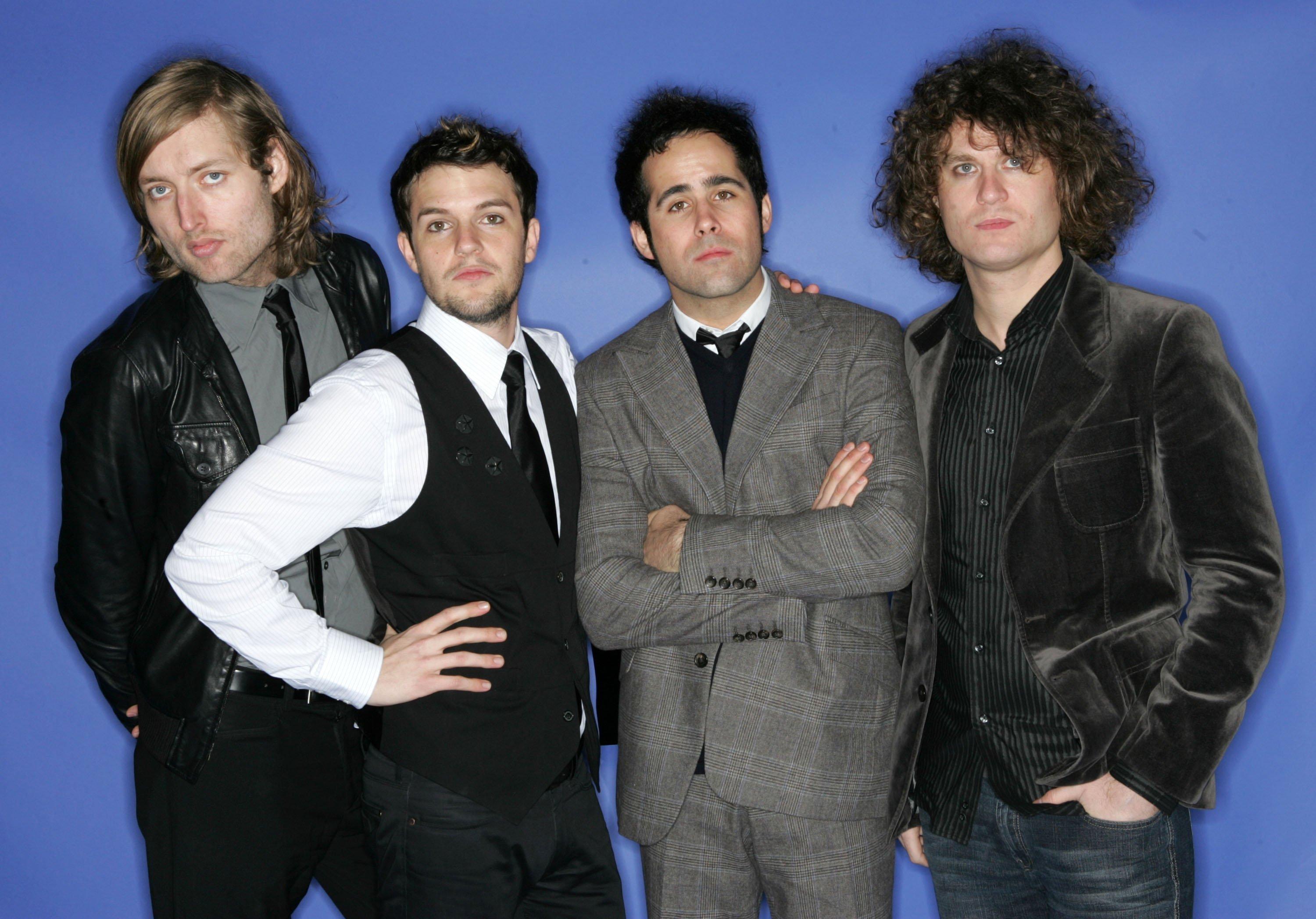
Photo: Frank Micelotta
list
5 Ways ‘Hot Fuss’ Propelled The Killers To Rock Royalty
During the alternative-guitar-band renaissance of the early 2000s, the Killers slugged out a debut album that’ll stick with us forever. Here are five reasons ‘Hot Fuss’ catapulted the Vegas favorites to the top.
They came out of their cage, and now they're doing just fine.
In an era of stiff competition, from the White Stripes to the Strokes, the Killers could have gotten lost in the shuffle. But with 2004's Hot Fuss, the Brandon Flowers-led, Vegas-based rock band essentially emerged fully formed, with a debonaire mystique, a raided new wave record collection (think the Cure and Duran Duran), and a knack for sky-high hooks. They didn't just nail the songs, and charisma, on the first go — they created one of the most timeless albums of their generation.
In the 20 years since, chances are "Mr. Brightside" has gotten maddeningly stuck in your head at least once. But that's just the tip of the iceberg: Hot Fuss is teeming with cryptic one-liners, sticky melodies and a specifically aughts sort of emotional abandon.
Today, the Killers are one of the biggest rock bands of the 21st century, with five GRAMMY nominations and more than 28 million records sold worldwide. Here are five aspects of Hot Fuss that helped them break into the stratosphere.
It's The Result Of A Completely Scrapped First Attempt
Sometimes, the first thought isn't the best thought. The Killers were full steam ahead on their debut album when Flowers hit a major snag: a little album called This Is It by the Strokes came out.
"When we put it on in the car, that record just sounded so perfect," Flowers admitted to NME in 2012. "I got so depressed after that, we threw away everything, and the only song that made the cut and remained was 'Mr. Brightside.'"
How would the Killers' legacy have changed without classics like "Somebody Told Me" and "Jenny Was a Friend of Mine"? We'll never know — but the band (and the world) is likely glad they gave Hot Fuss a second shot.
Brandon Flowers Is A Superb Lyricist
Did you know Hot Fuss has an extended murder narrative? Well, in two songs: "Midnight Show" and "Jenny Was a Friend of Mine." (The third act, "Leave the Bourbon on the Shelf," was relegated to their 2007 B-sides and rarities disc, Sawdust.)
Outside of sprawling concepts, Flowers' sneaky prowess as a lyricist is all over Hot Fuss, from sticky alliteration ("Turning saints into the sea/ Swimming through sick lullabies") to masterful use of negative space.
Exhibit A is "Smile Like You Mean It": "Someone is calling my name/ From the back of the restaurant/ And someone is playing a game/ In the house that I grew up in/ And someone will drive her around/ Down the same streets that I did." By erasing the specifics, and only providing a framework of memory, the picture is ever more elusive and intriguing.
The Album Is Front-Loaded With Five Bangers
Sure, some tracks on Hot Fuss, like "Change Your Mind" and "Believe Me Natalie," are relatively minor.
But with absolute napalm across the first five tracks — "Jenny Was a Friend of Mine," "Mr. Brightside," "Smile Like You Mean It," "Somebody Told Me," "All These Things That I've Done" — it's actually kind of a relief to get a sleeper album track, that reveals its qualities slower.
No matter your take on the rest of Hot Fuss, or their discography, the fact remains undeniable: they came in swinging.
They Kept The Demos Intact For Raw Impact
The Killers and the Boss have crossed paths a time or two — and they made a Springsteenian move when they used demos as the final tracks. It worked, imbuing Hot Fuss with a certain spontaneity and energy.
And because these Hot Fuss tracks were meant to comprise a demo, "We never thought [these songs] would be on a record." drummer Ronnie Vannucci Jr. later admitted. Talk about a turn of events: what could have been a collection of scratch tracks would help define a generation.
"Mr. Brightside" Took On A Life Of Its Own
"Mr. Brightside" has undeniably become the Killers' signature song — a staple not only at their concerts, but at bars and karaoke joints around the world. And once social media came along, it inspired a cornucopia of memes: even snippets of lyrics, like "Comin' out of my cage" and "It started out with a kiss, how did it end up like this?" have become miniature cultural forces.
Aside from Flowers' almost unwaveringly single-note verse melody, the song's odd structure — the second verse is the same as the first — has also been ripe for humor: one favorite meme takes you into the fictional writer's room when that decision was made.
Whether for rock 'n' roll transcendence, or just a nostalgic laugh, revisit Hot Fuss as it turns 20 — and smile like you mean it.
Is This It At 20: How The Strokes Redefined Rock
